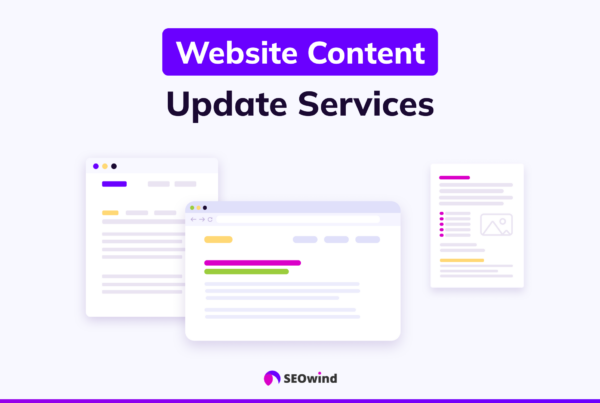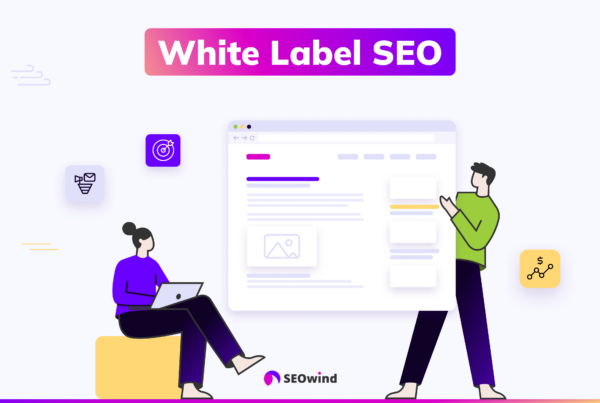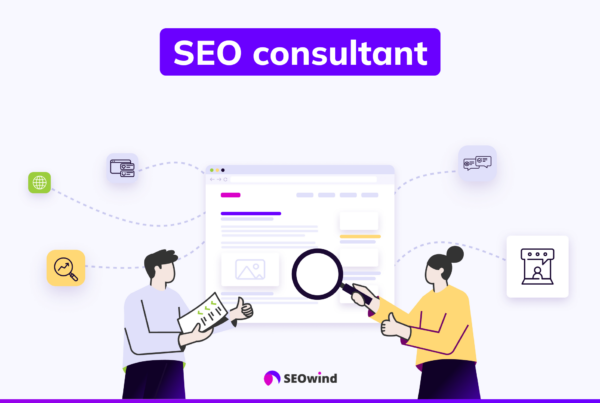Imagine your marketing agency as a vibrant ecosystem and each client as a unique species that thrive under specific conditions. Some need the predictability of a sun cycle; others demand the thrill of hunting performance targets. Profit does not come from one-size-fits-all solutions but from crafting an environment where every type of client flourishes and your agency prospers alongside them. That’s the impact of choosing the right marketing agency business model. It is your soil, water, and sunlight. Now, let’s dig into that fertile ground together.
What is a Digital Marketing Agency Business Model?
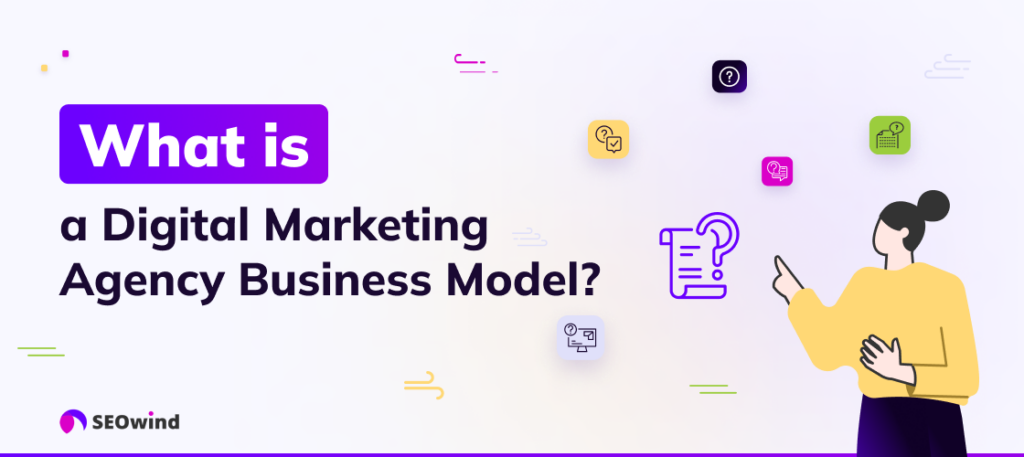
A digital marketing agency business model outlines the framework for how the agency will operate, generate revenue, and deliver value to its clients through digital marketing services. This involves a strategic plan that specifies the agency’s niche, service offerings, client acquisition strategies, pricing structures, and methods for delivering results.
The very architecture of a successful digital marketing agency rests upon its chosen business model. Picture these models as blueprints. Each line drawn has implications on stability, flexibility, and the potential for expansion, while every decision on that blueprint directly influences profitability.
The Role of Business Models in Agency Success
The business model is not just about bringing in revenue. You’ll also need to create a framework for long-term client relationships while streamlining operations to enhance efficiency. Each framework reflects different values: sustainability from retainers, precision from project-based contracts, and ambition from performance incentives. Meticulously selecting the proper structure ensures agencies aren’t merely surviving month to month but thriving year after year.
Identifying the Right Model for Your Agency’s Vision
As you set out to pinpoint which business model aligns with your vision, consider what you’re truly seeking. Stability? Scalability? Diversity? Each offers distinct benefits that must match your current capabilities and future aspirations. Identifying the best digital marketing agency business model requires an understanding of where you are now and foresight into what lies ahead.
Marketing Agency Business Models Examples
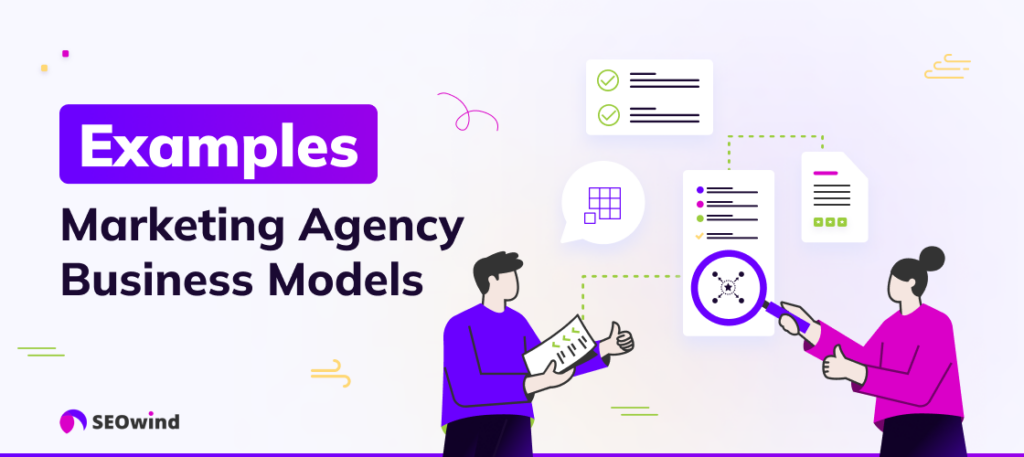
Navigating through agency business models is similar to choosing the right gear for a deep-sea dive. Each piece of equipment serves a unique purpose, and picking one that aligns with your venture’s objectives is crucial. Let’s explore four foundational agency business models that can deliver profitability.
Retainer-Based Model: Ensuring Steady Income
Imagine you’re planting an orchard. With tender care and regular nurturing, you expect the trees to yield fruit season after season. That’s what the retainer-based model brings to your agency: a consistent stream of income providing financial stability. Here are its key features:
- Predictability: Much like knowing when harvest season approaches, this model allows both parties to forecast revenue and workload.
- Deep Relationship Building: It facilitates stronger relationships as you work continuously with clients.
- Focus on Value: Agencies must consistently prove their worth by delivering results since retention hinges on continued client satisfaction.
This model suits agencies whose services support ongoing improvements in client businesses, like SEO or social media management.
Project-Based Model: Tailoring Services to Client Needs
Let’s compare marketing agency frameworks to tailoring. The project-based model reflects bespoke fashion, where each piece is crafted uniquely based on customer requests. This one-off project approach allows agencies to:
- Customize: Like measuring for that perfect suit. This approach customizes proposals to solve individual client challenges.
- Diverse Portfolio: Engaging with varied projects helps build a broad portfolio illustrating versatility, which is essential for attracting new clientele.
While incredibly flexible, this model can lead to uneven revenue flow without proper management, a stark contrast from the predictability of retainers.
Performance-Based Model: Driven by Results
This bold model rewards agencies based strictly on outcomes. Your success is directly tied to achieving measurable goals, often resulting in extreme productivity in key focus areas.
However, while lucrative, tying income solely to performance risks unforeseen turns, such as algorithm changes or market shifts impacting results beyond your control.
Commission-Based Model: Earnings Tied to Sales
The commission-based route is an exhilarating chase where each sale boosts earnings potential. Your efforts directly affect your profits; the more you sell, the more margins soar.
As invigorating as it may be, this strategy often experiences a great deal of volatility. You become heavily dependent on factors outside your control, such as seasonality or consumer whims.
Flat Fee Model: Predictability for Clients and Agencies
The flat fee model minimizes the twists and turns your agency and its clients normally face. This approach is renowned for its simplicity:
- A single predetermined charge covers specific services or packages.
- It eliminates guesswork about costs, fostering transparency and trust.
- This model is ideal for standardized services with a clear scope.
While predictability can be comforting, ensure it doesn’t lead to complacency in innovation or adaptation to client needs. Continual growth should always remain at the forefront of your priorities.
Hourly Rate Model: Flexibility in Billing
The hourly rate model epitomizes fluidity. It offers flexibility that might appeal to smaller clients or those with evolving needs:
- Bill clients based on actual time spent on their projects.
- Adjustments can be made as tasks become more or less complex.
- Encourages operational efficiency within your team.
However, this freedom comes with responsibility. Your business must meticulously track and justify hours worked, which are crucial in maintaining credibility and client satisfaction.
Hybrid Model: Combining The Best of Multiple Models
The hybrid model incorporates elements from different pricing strategies. Blending models can be a strategic move involving:
- Retainer agreements for steady work complemented by project fees for one-offs.
- An infusion of performance incentives that motivate teams and reassure clients.
Versatility is key! Tailor your strategy to create an optimal balance that benefits both parties’ long-term objectives without compromising short-term gains.
Picking the Most Profitable Model for Long-term Growth
Selecting the most lucrative business model isn’t simply about profits. You also need to match sustainable expansion with your vision like gears in a well-oiled machine. To do so:
- Analyze past performance data paired with projected industry trends.
- Consider scalability. What works now should also accommodate future growth.
- Examine the resources you need and their availability.
Diligently weighing these aspects against benchmarked successes ensures that when you find gold, you can mine and multiply it effectively over time.
Critical Factors That Influence The Choice of Business Model
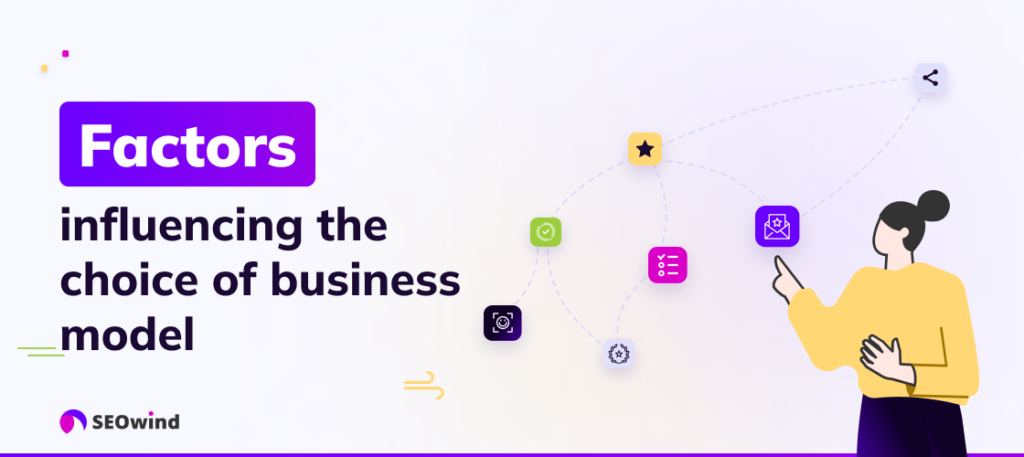
Selecting the right agency business model delineates your profit streams and defines how you engage with clients and manage resources. Let’s dive into some critical factors that can make or break your decision-making process.
Analyzing Market Demand and the Competitive Landscape
Before selecting the ideal business model, you need to understand market demand and competition.
- Market Needs: Is there a hunger for specialized SEO services or content marketing? Pinpoint what businesses crave.
- Competition Saturation: Are there numerous agencies offering PPC campaigns? It may be time to focus on a less crowded niche.
- Price Sensitivity: Evaluate whether potential clients favor cost-efficiency over premium services.
Aligning with market needs while staying distinct from competitors makes for a profitable agency recipe.
Understanding Your Agency’s Core Competencies
Knowing thyself was never so lucrative. Understand where your strengths lie. Is it creative branding or data-driven strategies?
- Identify skills that set you apart (creative campaign crafting, user experience finesse, analytical abilities).
- Match these competencies with services that are in demand yet underprovided within your purview.
- Ensure that core competencies resonate throughout your service offerings to develop a reputable identity.
Doing this transforms your unique capabilities into compelling reasons for clients to choose you over competitors, cementing your status as a profitable business over time.
Scalability Potential of Each Business Model
Scalability, the capacity to handle growth effortlessly, is crucial for longevity in any business venture. Different models offer variable expansion opportunities:
- Retainer-based approaches allow predictable scaling but may require higher levels of customization as you grow.
- Performance-based models enable scalability parallel to client success but might necessitate more significant investment in talent acquisition.
The most successful sustainable action plan often marries scalability with operational efficiency, securing long-term viability and profitability for agencies hungry to thrive.
The Importance of Financial Forecasting in Model Selection
Charting future financial landscapes illuminates paths laden with profit or fraught with pitfalls. Effective financial forecasting enables forward-thinking decisions:
- Anticipate revenue streams based on selected business models: retainers promising steady cash flow versus project-based uncertainties.
- Calculate costs meticulously. Staffing needs fluctuate remarkably between different operational frameworks.
- Assess risk management for unforeseen events, ensuring fiscal fortitude regardless of the economic climate.
Henceforth, integrating thorough financial planning is paramount when selecting an agency model that will generate the most profit today and tomorrow.
Expanding on the Hybrid Model: Future of Agency Business Plans
Case Studies: Success Stories of Hybrid Models
Imagine a world where businesses fluidly blend different strategies to create a bespoke blueprint for success. That’s precisely what has been happening in the dynamic realm of digital marketing agencies. The hybrid model is the frontrunner in a race to be crowned “the agency of the future.”
Agency merging retainer and performance-based model
One illuminating case study comes from a boutique agency that catapulted its growth by merging retainer and performance-based models. They offered clients SEO and content marketing services with a base fee for sustained efforts, sweetened with bonuses linked to traffic milestones and lead quality.
Agency merging project-based work with a recurring service model
Another example is an agency that mastered the alchemy of mixing project-based work with a recurring service model. Initially focused on campaign-specific projects, they recognized the client’s need for ongoing support. This presented an opportunity to introduce smaller, monthly packages geared towards analytics and continuous digital strategy improvements.
These amalgams have paved their own paths to profitability, client satisfaction, and resilience against market volatility, the hallmarks of sustainable business plans in today’s competitive landscape.
Implementing a Flexible and Adaptive Revenue Structure
Incorporating flexibility into one’s business structure is essential for those striving to become an agency of the future. In response to rapid shifts in technology and consumer behavior, deploying an adaptive revenue structure positions your agency as agile and attuned to change.
To successfully implement such a framework:
- Identify Core Strengths: Recognize what your team excels at, whether it’s creative campaigns, data-driven strategies, or exceptional customer service, and include those skills throughout your various offerings.
- Monitor Client Feedback: Keep communication channels open. Listen actively to feedback because it can be pivotal when adjusting your services and pricing structures.
- Stay on Top of Trends: The future of agencies hinges on staying relevant. So, keep learning about new platforms, tools, or consumption patterns that could necessitate a shift in how you charge or deliver services.
Above all else, remember that evolution is central to this approach. Just as each client brings distinct challenges and opportunities to your doorstep, let flexibility be both sword and shield. With an adaptive revenue structure woven into your hybrid model, you’re equipped for whatever arises along your voyage toward maximum profits.
Essential Tools and Resources for Agency Management and Growth
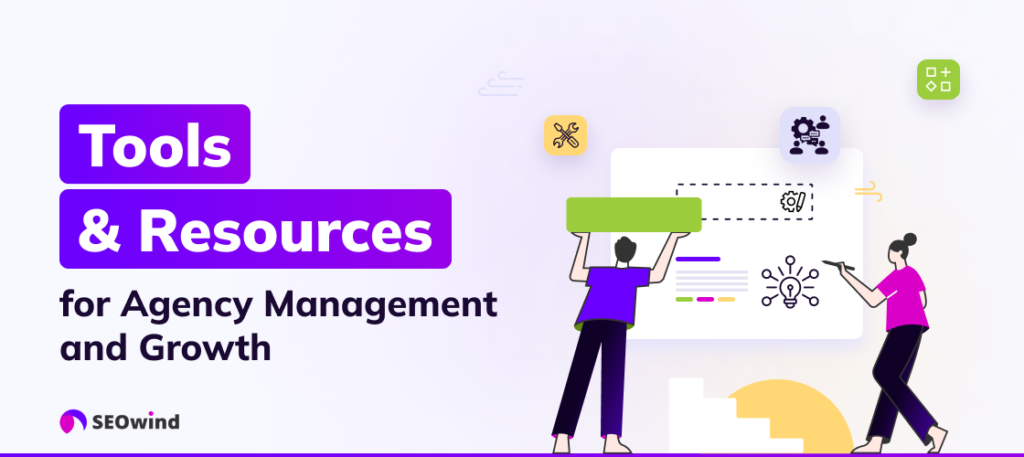
Navigating the bustling world of digital marketing agencies demands astute management, a well-oiled team, and an arsenal of tools that lay the foundation for efficiency and expansion. This journey explores the technology stack that refines operations, team-building strategies tailored for diverse agency business models, and client acquisition tactics designed to foster enduring relationships.
Technology Stack to Optimize Agency Operations
Imagine you’re assembling a high-performance race car. Each part must work in perfect harmony. Selecting a technology stack for your agency is no different. These carefully chosen systems streamline workflows and provide valuable insights aiding decision-making. Let’s examine some essential elements:
- Project Management Software: Maintain order in the chaos of ongoing projects with tools like Asana or Trello.
- CRM Systems: Salesforce or HubSpot can be the bedrock for storing client data securely while easing access.
- Automation Tools: Use the power of Marketo Engage, Brevo, or Mailchimp to automate mundane tasks like email campaigns.
- Analytics Platforms: Google Analytics offers a lens into user behavior, helping tailor your strategy.
- AI Tools: Improving agency productivity and efficiency, whether it’s for AI content writing like SEOwind, video, or podcast editing with Descript or Krips with its automated sales call transcription.
Selecting technologies that seamlessly work with one another ensures your agency runs like clockwork, leaving you more time to dream big and drive growth.
Building and Managing a Skilled Team for Various Models
The backbone of any successful agency business model is its people, who should create a symphony of different talents playing in tune. Constructing such an ensemble involves recognizing which instruments are needed:
- Identify Core Roles: Whether retainer-based or project-specific, ascertain positions crucial for service delivery, from creatives to strategists.
- Robust Recruitment Process: Develop a recruitment process that helps you select candidates with skills aligned with your agency’s values.
- Continuous Learning Culture: Encourage team members to stay ahead by sponsoring courses relevant to their roles.
Skill diversity within your troupe enables the fluidity to switch between business models as market rhythms dictate.
Strategies for Effective Client Acquisition and Retention
Acquiring new clients while retaining those who already exist is like balancing on a tightrope. Implement these actionable methods:
- Engage Through Storytelling: Celebrate what makes each client unique via case studies that capture potential clients’ attention.
- Customer Success Focus: Establish dedicated teams, ensuring deliverables exceed expectations. Word-of-mouth referrals are golden.
- Regular Check-ins: Periodic meetings help uncover potential upsell opportunities.
Incorporating thoughtful approaches strengthens bonds with clients.
Embedding these tech widgets into your operational weave, sculpting teams fit for various projects, and mastering the artistry behind securing vibrant client partnerships prepares your company to become a profit powerhouse within the competitive tableau of digital marketing.
Turning Your Digital Marketing Agency into a Profit Powerhouse
To transform your digital marketing agency into a profitable agency, it’s crucial not to leave profitability to chance. So, let’s explore the intersection between smart model selection and effective management tactics. As we navigate this process, agility and adaptability are essential for survival and success.
Examining Profit Margins Across Different Models
Profit margins vary widely among different digital marketing agency business models. Understanding these variances is crucial when selecting the most profitable business model for your operation.
- Retainer-Based Model: Known for generating consistent income streams, this model can yield strong profit margins due to predictable workloads and streamlined processes.
- Project-Based Model: Here, profits may be sizable per project but can fluctuate significantly based on workload volume and project execution efficiency.
- Performance-Based Model: This risky yet potentially rewarding option ties your revenue directly to client results. Excelling can lead to higher margins with success-based premiums.
- Commission-Based Model: Your margins depend on product prices and sales volumes. High-ticket offers typically mean better profits.
Selecting from among these agency business models requires careful consideration of both market demands and internal competencies. Only then you can draw up a blueprint for solid financial health.
Tips to Maximize Revenue and Minimize Costs
Maximizing revenue while minimizing costs is like keeping your ship buoyant while laden with treasure. It requires finesse and balance. Here are some actionable tips:
- Niche Specialization: By focusing on specific industries or services, you can command higher fees due to specialized expertise.
- Process Optimization: Streamline operations through automation tools and standardized procedures. This cuts down on wasteful expenses while boosting productivity.
- Up-Sell and Cross-Sell Services: Offer complementary services or advanced features clients may not know they need, enhancing their campaign effectiveness while increasing your billables.
- Invest in Talent Development: Equip your team with cutting-edge skills that allow them to deliver outstanding results more efficiently. It’s an investment that pays itself back manifold.
Through intelligent planning, operational discipline, and continuous innovation, every digital marketing agency can become an immensely profitable venture that others look to as a beacon of commercial success.
Adjusting Your Business Model in Response to Industry Changes
Change is the only constant. To stay ahead of the curve, agencies must evolve with the times and reshape their strategies. Let’s explore how flexibility and adaptation can be woven into your business model.
Staying Agile in a Dynamic Digital Landscape
Today’s digital landscape can feel like a ceaseless ebb and flow that demands agility from marketing agencies.
To remain competitive as an agency of the future, thinking ahead about ways to pivot and progress is vital. It often means periodically reassessing client relationships, service offerings, and even pricing structures. Technology isn’t static, and neither should your agency be.
Maintaining agility involves a few crucial steps:
- Regularly Analyzing Trends: Dive deep into market research to pinpoint emerging trends before they go mainstream.
- Investing in Employee Training: Equip your team with new skills that align with those trends. You’re only as agile as your most adaptable employee.
- Fostering a Culture of Innovation: Encourage creative problem-solving and reward initiatives that champion organizational change.
Through these actions, your agency becomes proactive and remains ahead of industry curves rather than racing to catch up.
Adapting to New Technologies and Consumer Behaviors
Nowadays, saying technology moves quickly would be an understatement. It moves at a constant sprint. Marketers who hesitate or take too long to decipher trends will find themselves lagging behind more nimble competitors.
The future of agencies hinges on blending new technologies with keen insight into evolving consumer behaviors. Consumers are constantly adopting new ways to engage with content. Understanding this progression helps shape services that resonate with audiences today and tomorrow.
For example:
- Embracing AI for personalized customer experiences
- Leveraging data analytics for more nuanced targeting
- Using automation tools for enhanced efficiency
However intriguing these technologies might be, remember that marketing still revolves around human connections at its core. While algorithms and analytics provide direction, ensure that any tech implementation enhances rather than replaces human-centric strategies.
By balancing advanced tech adoption and an unswerving focus on the customer experience, agencies can adapt robustly within an ever-changing environment. As a result, they secure their place as enduring powerhouses of creativity and influence in the digital age.
What is the Best Marketing Agency Business Model?
Choosing the ultimate marketing agency business model depends on several factors, including your agency’s strengths, your market’s unique needs, and how you want to manage risk and reward. It comes down to a willingness to take risks and the ingredients at hand. However, certain models have established themselves as more consistently profitable. Let’s explore why there isn’t a one-size-fits-all answer but a strategic choice that aligns with your agency’s vision and goals.
Agencies often lean towards a hybrid model, which fuses various elements from multiple models. This flexibility allows them to tailor services precisely to clients’ demands while optimizing their revenue streams. For instance, combining retainer and performance-based components might mean a stable income with additional bonuses linked directly to campaign results.
Determining the most profitable marketing agency business model involves weighing client relationships against financial predictability. Understanding each model helps you recognize which could be blended or adjusted for maximum profitability and sustainability within a dynamic digital landscape.
Stay up to date with industry shifts. After all, today’s ideal approach may need tweaking tomorrow. By embracing adaptability and focusing on continuous improvement, any chosen model can become the best version to build your unique venture into a thriving marketing agency.
Key Points on Agency Business Models
With each model’s nuances and implications for profitability, making an informed decision is paramount to your agency’s success.
It’s not merely a matter of how you bill but how you align your operations with client needs and value. From the consistent revenue stream of retainer-based structures to the flexibility of project-based engagements, each model carries its unique flavor tailored to different service delivery types.
We explored performance-driven frameworks where accountability to results brings high rewards, while commission-based setups bind earnings directly to the volume of sales generated by your efforts. The flat fee approach ensures predictability for both clients and agencies, just as hourly rates allow for greater adaptability.
Then, there is the hybrid model, which combines elements from various frameworks. It was born from recognizing that no single approach could fit every scenario in this ever-dynamic industry landscape.
Encouraging Continuous Learning and Adaptation for Success
The future looks bright, especially if you keep your eyes wide open and fingers firmly on the pulse of change. Just like climbers scaling sheer cliffs use their diverse tools to anchor every new step securely, so must marketing agencies equip themselves with versatile strategies that cater to evolving market demands and consumer behaviors.
Drawing upon case studies, remember that successful agencies seldom stick rigidly to one formula. They’re always learning. Embrace that mindset relentlessly. Invest time in understanding new technologies that could streamline your operations or foster deeper connections with your audience.
Ultimately, you mustn’t get too comfortable with any one model. Be ready to adapt, pivot when necessary, and continuously refine your business strategy based on emerging trends, insights from data analytics, and feedback loops.
Think of each day at your digital marketing agency as another opportunity. Stay curious, be inventive in your thinking, and remain steadfast in striving for operational excellence that reflects vividly in client satisfaction scores. These are cornerstones on which thriving marketing agencies build empires.
